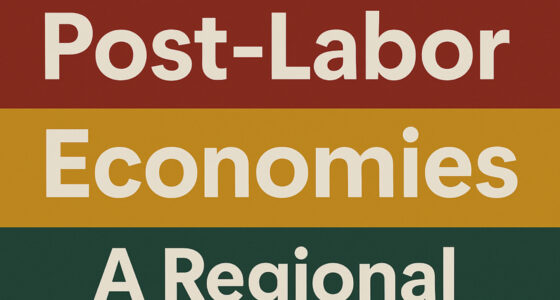Aligning Billions of Personalized AIs
Post‑Labor Economics Series • Policy Brief • July 2025
Executive Snapshot
Generative‑AI agents have jumped from chat windows to deeply personalized co‑pilots in less than 18 months:
- Alexa + is rolling out to tens of millions of Echo devices with context memory and autonomous task execution .
- At CES 2025, three rival assistants promised on‑device “life OS” functionality—calendar, finance, and health logs fused into one voice agent .
- Corporate rollouts: McKinsey finds 72 % of Fortune 500 pilots now include AI agents that act on employee data, not just chat .
Personalization multiplies value and risk. A small alignment bug scaled to hundreds of millions of instances becomes systemic failure: in February, a ChatGPT memory update corrupted user profiles worldwide, triggering thousands of erroneous auto‑emails and workflow crashes .
Soft singularity: AI melds seamlessly into daily life.
Hard safety: Every misaligned agent can now act, spend, or speak on our behalf.
1 | The Scale Problem in Numbers
| Metric | 2023 | 2025 | Δ |
| Monthly active users of personalized AI assistants | 180 m | 1.2 bn | ×6.7 |
| Avg. tasks delegated per user/day (McKinsey survey) | 1.3 | 6.8 | ×5.2 |
| Voice + multimodal queries (Amazon) | 25 % of Alexa traffic | 63 % | +38 pp |
A single 0.01 % failure rate means 120 000 daily errors at today’s scale.
2 | Where Alignment Breaks in Personalized Context
- Value drift over time – user preferences shift; cached embeddings don’t.
- “Shadow goal injection” – malicious prompts hide in calendar invites or HTML emails, hijacking agents.
- Cross‑profile bleeding – multi‑user devices mix child and parent contexts (documented in Alexa+ beta).
- Hardware constraints – on‑device personalization cuts cloud audit visibility.
3 | Regulatory Landscape—Soft Law Hardening Fast
| Jurisdiction | 2025 Rule | Relevance |
| EU | AI Act Art. 54: Transparency + performance logging for every general‑purpose model by Aug 2, 2025 | Requires per‑user error telemetry; mandates opt‑out from behavioral profiling. |
| ISO 42001 | First AI‑Management‑System (AIMS) standard (Dec 2024) now entering certification audits | Boards can face duty‑of‑care liability if they skip AIMS after incidents. |
| U.S. | Executive Order 14117: Safety tests before releasing powerful personalization models; FTC open rulemaking on deceptive AI assistants | Draft but influential; sets expectation of proactive alignment proofs. |
| China | Generative‑AI measures require “social‑stability filters” plus user consent for personalized recommendations | Emphasises content control over autonomy; export restrictions on user vector embeddings. |
4 | Safety Architecture for Billions of Agents
4.1 Model‑Level Alignment
- Two‑stage RLHF: align to universal ethics first, personalize second to avoid value collapse.
- Task‑scoped memory: ephemeral per‑task context unless retained with explicit user consent.
4.2 Personalization Guard‑Rails
- Policy engine sandbox intercepts high‑impact actions (payments > $50, auto‑emails to > 10 recipients).
- Intent verification loops: agent summarises planned action; user approves (EU AI Act compliance).
4.3 Oversight & Audit
- Telemetry hashing: record anonymized decision traces for post‑incident forensics without leaking PII.
- Red‑team marketplaces: reward discovery of jailbreaks that exploit personalization channels (e.g., hidden macros).
5 | Policy Recommendations (EU & U.S. Focus)
| Action | Lead Agency | Timeline |
| Mandatory Personalized‑AI Risk Assessments for user bases > 5 m | EU AI Board / U.S. NIST | 2026 |
| Agent Registry—public list of AI with spending authority or auto‑communication | Consumer‑protection agencies | 2026 beta |
| Incident 48‑Hour Rule—publish root‑cause & mitigation within two days (inspired by OpenAI status updates) | FTC / EU AI Office | 2025 Q4 |
| Global Safety Passport—ISO 42001 + EU AI Act compliance = mutual market access | G7 / OECD | Negotiation 2025‑27 |
6 | Corporate Playbook to Survive “Hard Safety”
- Adopt ISO 42001 early—signals duty‑of‑care compliance; reduces insurance premiums.
- Zero‑trust personalization—segregate user memories by encryption; implement opt‑in data flow.
- Explainable UX—surfacing agent reasoning boosts trust and meets EU transparency.
- Resilience drills—simulate mass‑memory corruption like Feb 2025 ChatGPT incident .
7 | Risk Matrix
| Risk | Likeli‑hood | Impact | Mitigation |
| Cascading misalignment bug | High | High—mass erroneous actions | Policy engine, kill‑switch |
| Prompt‑injection (cross‑site) | Med | High—account takeover | Input sanitization, RL “jailbreak” adversaries |
| Regulatory non‑compliance fine | Med | Med—4 % global turnover (EU) | ISO 42001+ |
| Trust collapse after privacy breach | High | High—user exodus | End‑to‑end encrypted memories |
8 | Conclusion—From Soft Wonders to Hard Guarantees
Personalized AIs have ushered in a gentle singularity—wonders that become routine. Yet safety cannot be gentle. At billion‑user scale, any misalignment is an infrastructure‑level threat.
Policymakers must codify standardized audits, rapid incident protocols, and reciprocal compliance.
Executives must treat alignment and traceability as core product features, not bolt‑ons.
Next Step: I am forming a Personalized‑AI Safety Consortium to draft an open‑source Policy Engine reference implementation. Subscribe at thorstenmeyerai.com/newsletter to review the spec and pilot audits.
Citations
- Wired. “Amazon Rebuilt Alexa Using a ‘Staggering’ Amount of AI Tools.” Jun 2025.
- Trend Micro. “CES 2025: AI Digital Assistants and Their Security Risks.” Jan 2025.
- V&E Insights. “Build Once, Comply Twice: EU AI Act Next Phase.” Jul 2025.
- OpenAI Community Forum. “Catastrophic Failures of ChatGPT Memory Update.” Feb 2025.
- ISMS.online. “ISO 42001 Implementation Guide 2025.” Mar 2025.
- McKinsey Digital. “Super‑Agency in the Workplace.” Mar 2025.
- Europarl Topics. “EU AI Act—First Regulation on AI.” Feb 2025.
- Scoop.market.us. “Intelligent Virtual Assistant Statistics 2025.” Feb 2025.
- GitHub Copilot Benchmark Blog. “Devin vs SWE‑bench.” Apr 2025.









